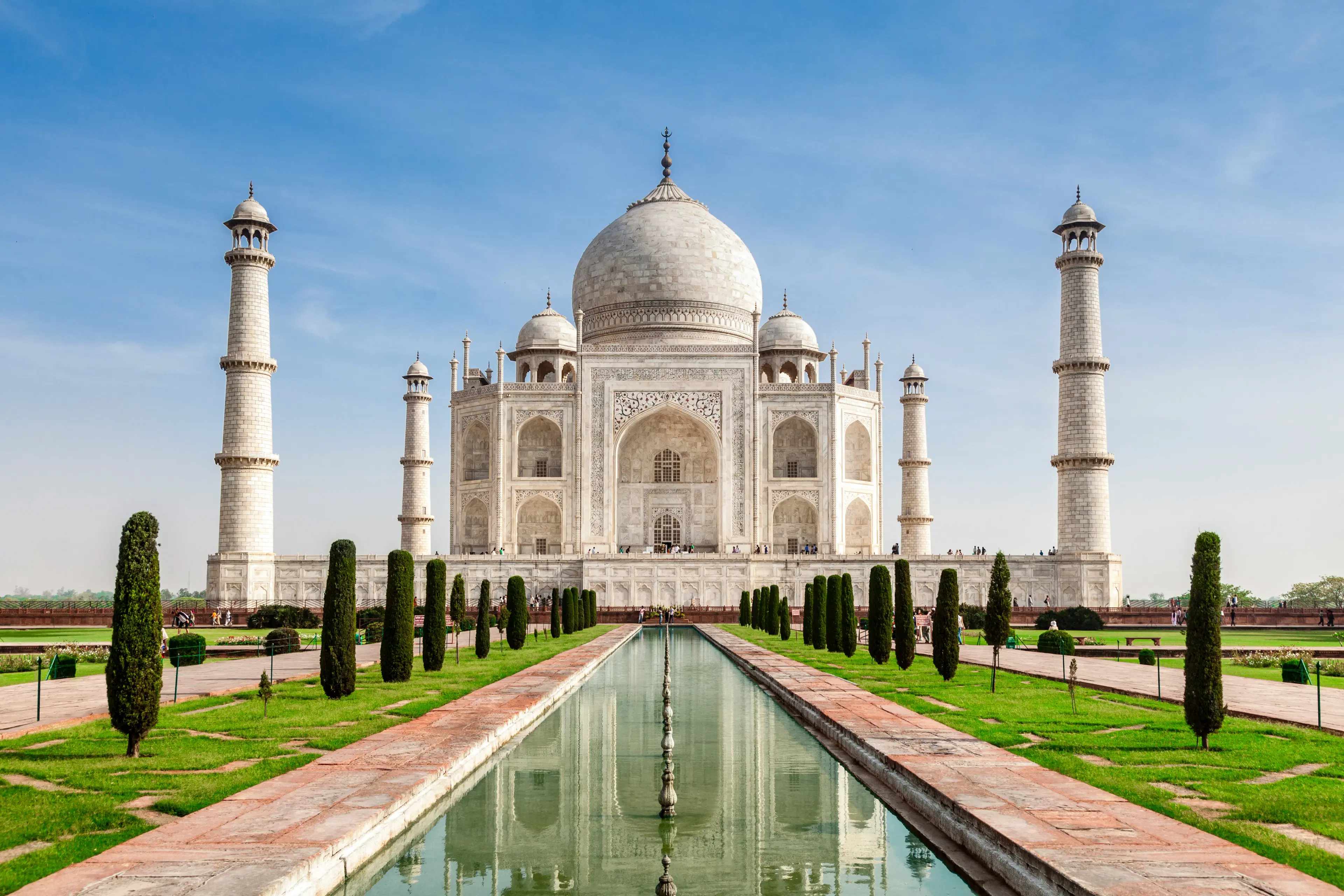
Flights
•04 min read

The Taj Mahal emerges like a vision from dreamlike mists, its marble dome gleaming under a clear sky, symbolizing eternal love. As a UNESCO World Heritage Site and one of the Seven Wonders of the World, it beckons travelers with promises of awe and inspiration. This blog offers expert insights to plan your Agra Taj Mahal visit, touching on travel tips, historic backdrops, and practical details that make your trip an unforgettable journey.
The story behind the Taj Mahal is as intricate and moving as its architecture. Built in the 17th century by Emperor Shah Jahan in memory of his beloved wife, its design symbolizes undying love and a timeless tribute to beauty. With exquisite inlay work, delicate carvings, and a perfect blend of symmetry and harmony, the Taj Mahal stands as a pinnacle of Mughal architecture and ingenuity.
This monument is internationally acclaimed for both its aesthetic appeal and its deep cultural significance. Visiting the Taj Mahal is not just a sightseeing trip; it is an immersive experience that connects you with a rich tapestry of history and art. It is a once-in-a-lifetime encounter that speaks to the heart of every traveler, from the wanderer to the professional seeking a brief respite from a busy schedule.
To truly appreciate its splendor, timing your visit is crucial. Early mornings and late afternoons are ideal, as the soft light enhances the marble's natural glow while keeping the crowds at bay. For those inclined toward a unique experience, moonlight visits offer a mystical view of the monument under the stars. Remember, the cooler months from October to March generally ensure a more pleasant visit.
Getting to this iconic site is easier than you might think. Agra is well-connected by train lines and buses from major Indian cities. For those preferring flexibility, private vehicles offer comfort and convenience. Once in Agra, clear signages and local guides can help you navigate the city and reach the Taj Mahal smoothly.
Understanding ticket prices and timings is vital for hassle-free planning. The entry fee is modest – around ₹50 for domestic visitors, ₹1100 for international tourists, and ₹540 for SAARC/BIMSTEC nationals, with some additional fees for accessing the main mausoleum. Remember, the Taj Mahal welcomes visitors from sunrise to sunset, except on Fridays when it is reserved for prayers.

For the photography enthusiast, the Taj Mahal offers some of the most captivating views. Capture its grandeur by focusing on iconic spots like the reflecting pool and lush surrounding gardens. Use a tripod during the early morning for stability, and experiment with different angles to emphasize symmetry and detail. Natural light is your best friend here, and sometimes even a smartphone can capture this marvel perfectly with the right settings.
Visitor guidelines aim to protect both the monument and its guests. Expect routine security checks and remember not to carry large bags or prohibited items. The site is well-organized, but a few practical tips—like wearing comfortable footwear for extended walks and staying hydrated—can elevate your overall experience. Familiarize yourself with the rules to ensure a smooth, respectful visit.
Agra offers much more beyond the Taj Mahal. Explore historic sites such as Agra Fort, with its imposing walls and intricate palaces, or take a serene stroll through Mehtab Bagh—a garden that offers an unobstructed view of the Taj across the Yamuna River. For history buffs, a visit to Fatehpur Sikri, not far from Agra, enriches the narrative of this region's royal past. A carefully planned itinerary allows you to experience a day filled with cultural and architectural wonders.
For those with limited time, a well-structured day trip can still cover Agra’s best attractions. Start early with a sunrise visit to the Taj Mahal, then move on to explore Agra Fort. Enjoy a leisurely lunch at a local eatery, followed by a visit to Mehtab Bagh in the afternoon to capture stunning views of the monument. This itinerary is designed to provide an immersive experience without feeling rushed.
Planning ahead not only enriches your visit but also saves you time. Avoid peak hours by booking your tickets online and consider visiting early in the morning or late in the afternoon. These insider tips help you sidestep the busiest times, allowing a more relaxed and in-depth experience of this architectural wonder.

Yes, a day trip to the Taj Mahal is possible, especially if you plan your itinerary carefully and arrive early.
The Taj Mahal is closed every Friday for general visitors, as it is reserved for prayers at the mosque.
The entry fee varies: ₹50 for Indian citizens, ₹1100 for foreign tourists, and ₹540 for SAARC/BIMSTEC nationals. Additional charges apply for visiting the main mausoleum.
The Taj Mahal is open from sunrise to sunset, except on Fridays. Moonlight visits are available on specific days.
Tickets can be booked through the official Archaeological Survey of India website or other authorized platforms.
Planning your Agra Taj Mahal visit harnesses both the beauty and the history of this iconic monument. With careful preparation—from selecting the best time to visit and mastering photography tips, to understanding logistical details—you can transform your visit into an extraordinary journey filled with wonder and discovery. The Taj Mahal is not just an architectural marvel but a timeless experience that resonates deeply with those seeking cultural and historical riches.